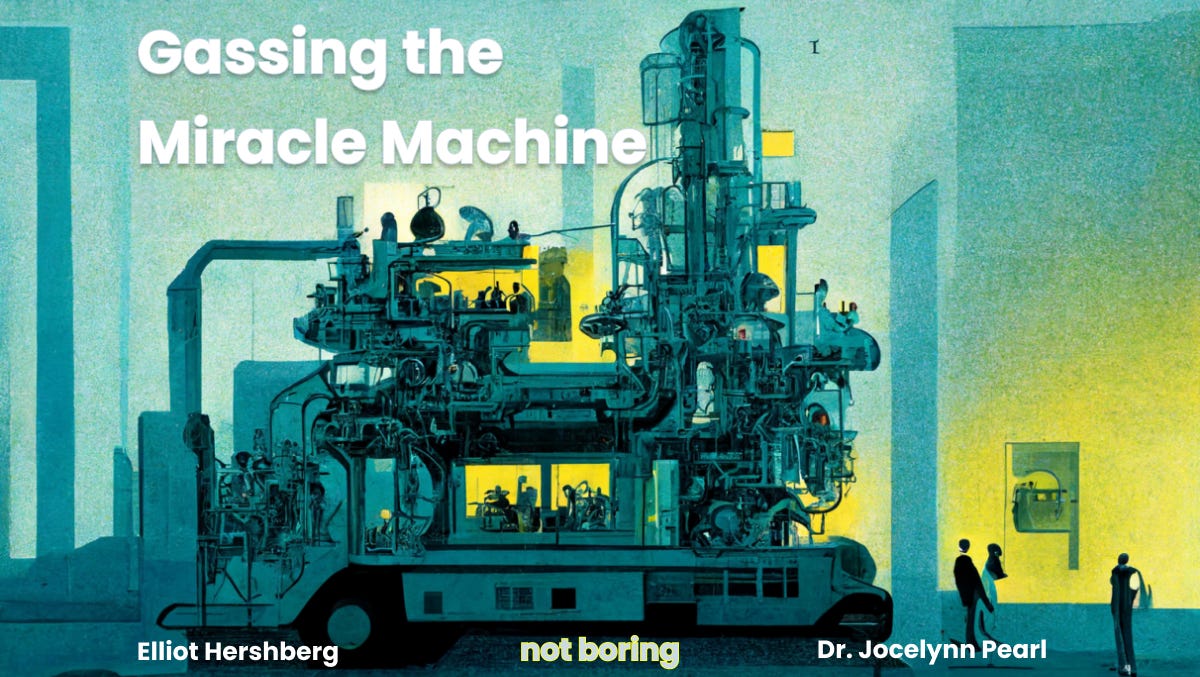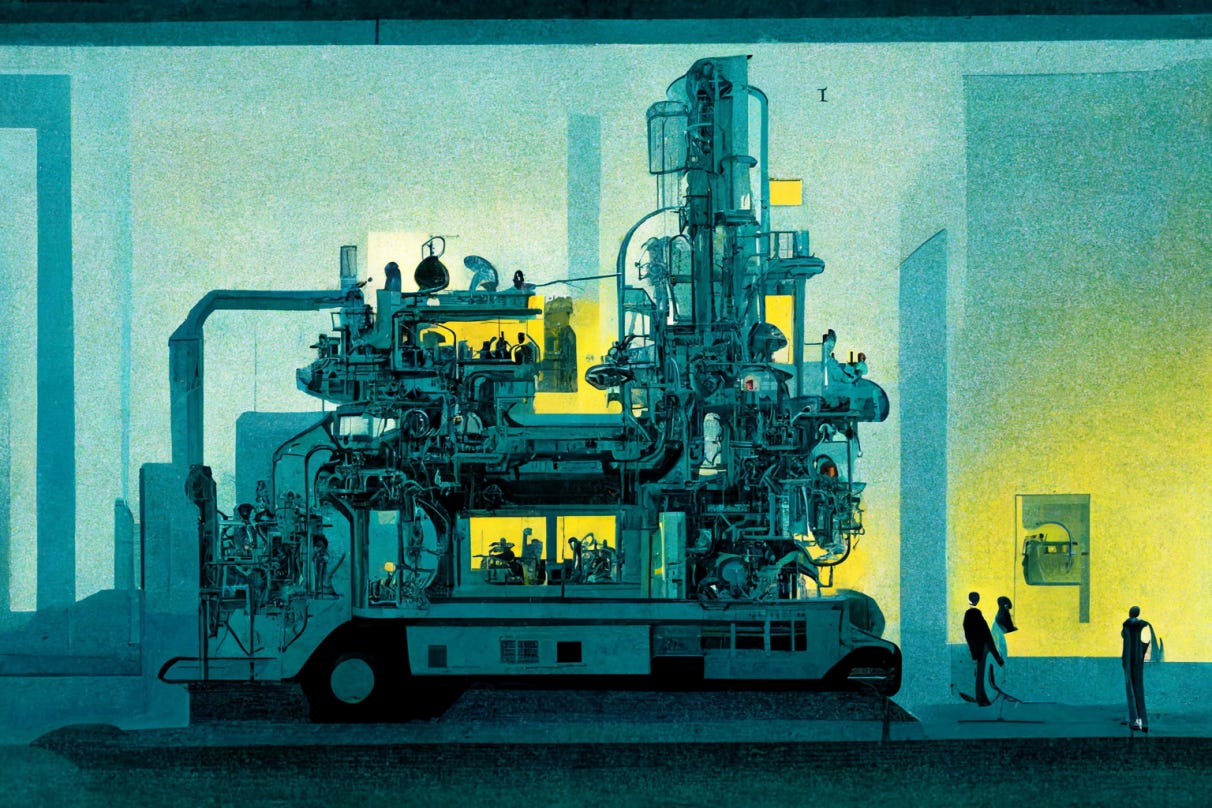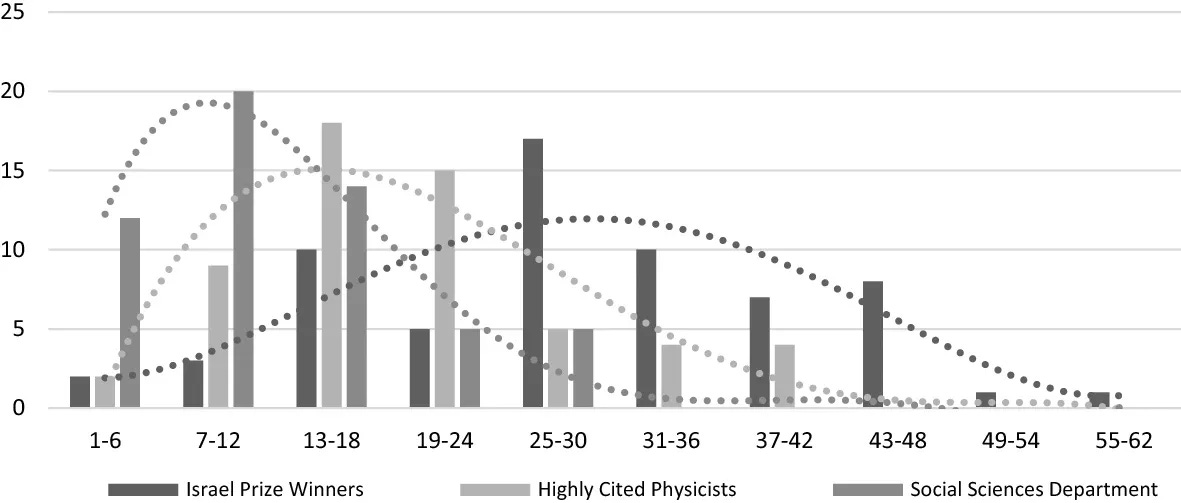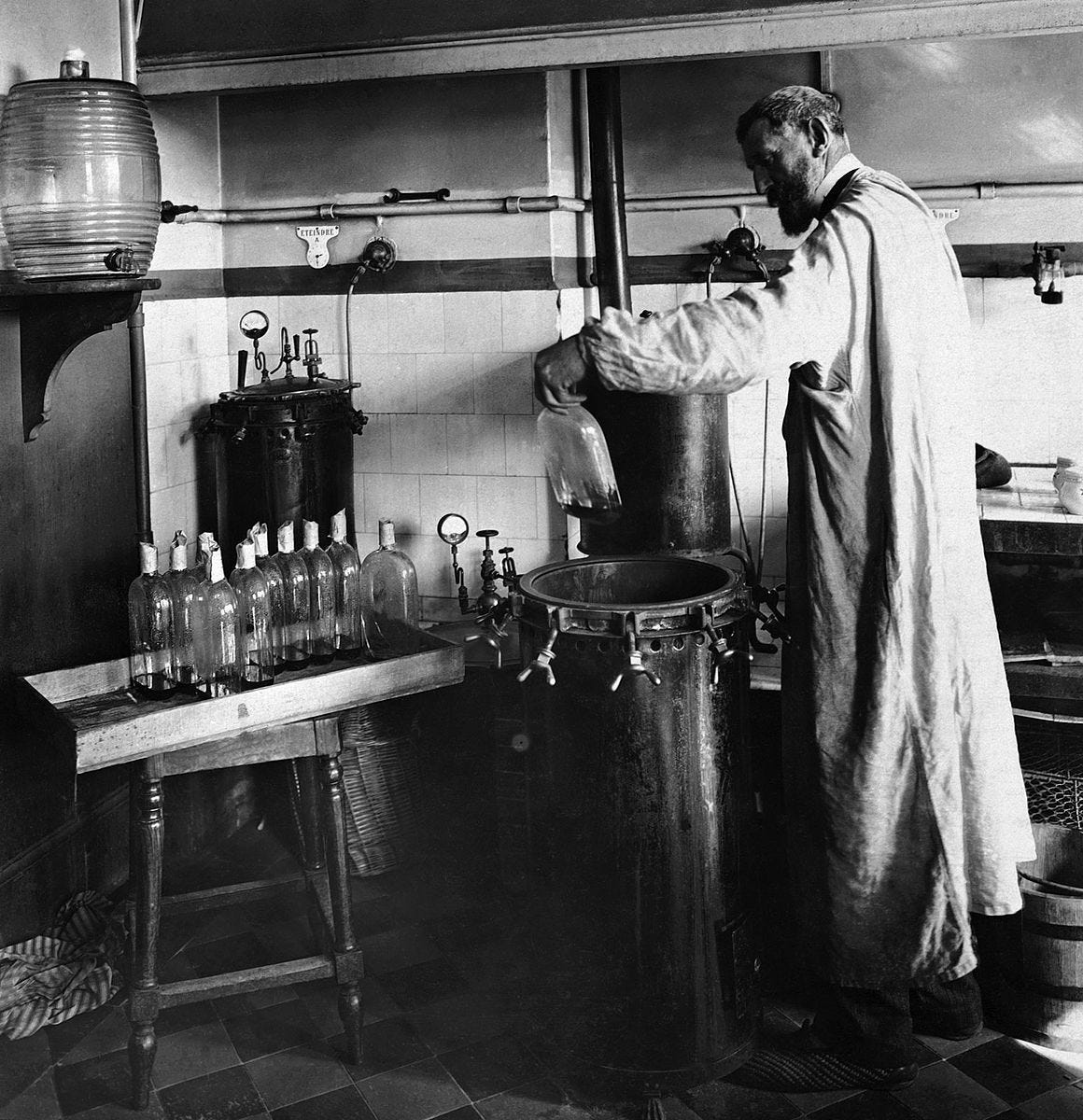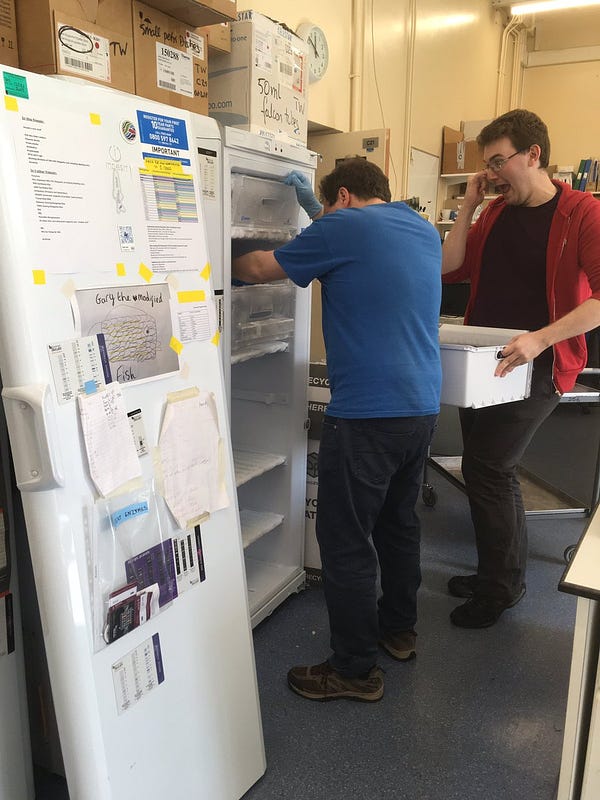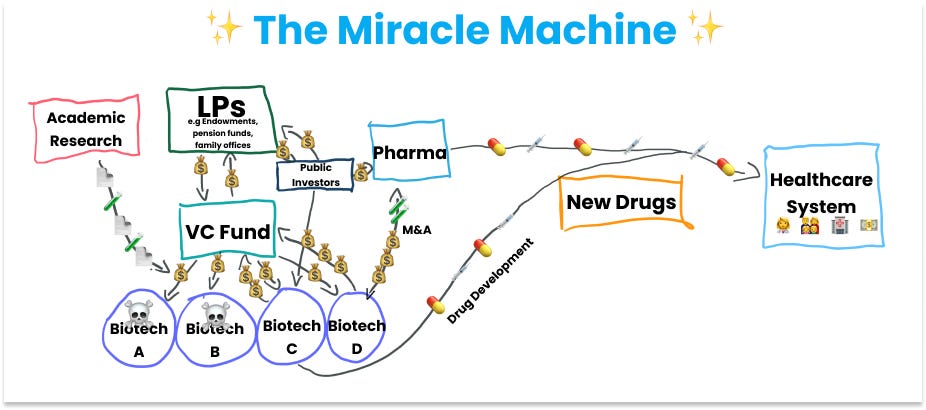Not Boring by Packy McCormick - Gassing the Miracle Machine
Gassing the Miracle MachineElliot Hershberg & Dr. Jocelynn Pearl on the changing landscape of scienceWelcome to the 1,662 newly Not Boring people who have joined us since last Monday! If you haven’t subscribed, join 158,411 smart, curious folks by subscribing here: 🎧 For the audio version, click the play button or listen on Spotify or Apple Podcasts Today’s Not Boring is brought to you by… Masterworks As inflation and volatile markets continue to bleed the value of your cash and investments, it might be time to look for a potential solution, outside of traditional markets. One thing I’m looking at are real assets. Why real assets? For inflation protection, historical performance, and portfolio diversification. According to new research from Goldman Sachs, portfolios with real assets have actually outperformed the 60/40 portfolio since WWII. Right now, one real asset in my portfolio that's in the green is blue-chip art. Afterall, if there’s one thing Powell can’t print, it's more Picassos. How am I doing it? With the awarding-winning platform, Masterworks. Masterworks actually makes it simple to invest in art. For one, they’ve built a world-class team of art market professionals who understand this world way better than I do. What I also love is they’re extremely data driven, and use a proprietary price database to identify artist momentum. They select works by the same world-renowned artists that are coveted by ultra-wealthy collectors and major museums alike (think Picasso, Basquiat, and Banksy) then securitize them so you can invest. They’ve also delivered solid results, including a 33% net return with their last sale. Skip the waitlist with the Not Boring link. See important Regulation A disclosures at masterworks.com/cdHi friends 👋, What a weekend! Phillies in the NLCS. Eagles 6-0. And we’re keeping the momentum going into Monday morning with a killer guest post on SCIENCE. Optimism has been the theme of the year — and is the mission — here at Not Boring. Our brand of optimism isn’t blind, a belief that things will always go right; it’s that, despite setbacks, humans are capable of discovering solutions to our biggest challenges. The scientific process is a main reason for that. But another theme has been that, while progress is possible, it’s been slower on some fronts than we’d like or even expect. One reason, as we’ve covered, is that we need more energy. Another, that I hear whenever I listen to or read smart people on the subject, is that we aren’t getting as much juice for our scientific research squeeze as we used to. So when Not Boring’s own Elliot Hershberg told me that he and Dr. Jocelynn Pearl wanted to write a piece on the changes underfoot in the way we do scientific research, I jumped at it. They delivered. This piece is a deep and sweeping look at how scientific research works in America, how it’s funded and organized, what it does well and where it falls short, and the meta-experiments people are running to jumpstart the Miracle Machine. Let’s get to it. Gassing the Miracle MachineBy Elliot Hershberg & Jocelynn Pearl Science is a foundational instrument for driving human progress. It is the system we’ve constructed for arriving at detailed explanations of objective reality that are hard to vary. These types of explanations require coherent models that account for empirical observations. The only way to arrive at these types of explanations is to do the challenging experimental and theoretical work necessary to ensure all of the details of the explanation play a functional role and are closely coupled to objective reality. Explanations of this nature are a central part of how we moved from mythology to physics, and from caves to skyscrapers. The physicist David Deutsch argues that this is the core idea of the Scientific Revolution, “ever since which our knowledge of the physical world and of how to adapt it to our wishes has been growing relentlessly.” The guiding light of scientific discovery is one of our most precious resources, and must be stewarded with care. Beyond developing new explanations, we have established an intricate human system to convert new knowledge into the inventions that power the modern world. Studying and improving this system is essential—which requires interfacing with countless complex human systems. As the visionary Vannevar Bush argued, “We need better understanding of the whole complex affair, on the part of legislators, the courts, and the public. There will be no lack of inventions; genuine inventors just can’t help inventing. But we want more successful ones, and to get them requires better understanding.” Guided by his mission to accelerate scientific progress, Vannevar Bush led efforts to expand the U.S. research funding system into what it is today. This powerful system is what Eric Lander, scientist and former director of the Office of Science and Technology Policy, calls the Miracle Machine. Our systematic efforts in funding basic science have ultimately led to miracles like the Internet, artificial intelligence, cancer immunotherapies, and gene editing technologies like CRISPR. While the results to date have been miraculous, the machine doesn’t run itself: maintaining the system is absolutely critical. Over time, though, we’ve become complacent in our maintenance of this machine. Lander coined this term when passionately arguing for an increase to our federal research budget which has actually been decreasing in recent years. Over time, “adjusted for inflation, the budget for the National Institutes of Health, the federal medical research agency, has fallen since 2003 by nearly 25 percent.” The challenge of funding science isn't purely about advocating for a larger budget. Our actual funding mechanisms have become increasingly sclerotic, inefficient, and driven by consensus. A US Government study estimated that professors now “spend about 40 percent of their research time navigating the bureaucratic labyrinth” that is necessary to fund their labs. In another alarming survey, 78% of researchers said they would change their research program ‘a lot’ if given unconstrained funding. Young scientists also face serious bottlenecks to getting funded early in their careers, despite this being potentially the more productive and groundbreaking period in their lives. Beyond lab funding, there are serious structural bottlenecks in the way that we translate scientific discoveries into new medicines and products. This is what former NIH Director Elias Zerhouni called the Valley of Death. In biotech, company creation has lagged in recent years. The physician-scientist Eric Topol recently pointed out that although we’ve made profound advances in understanding the human genome, this knowledge hasn’t yet been made actionable in the clinic. Any optimist and advocate of human progress should view the health and efficiency of our Miracle Machine to be of central importance, and we are clearly operating far from our maximum capacity. So, what do we do? Challenges and inefficiencies represent new opportunities. In recent years, there has been an explosion of innovation in scientific funding mechanisms. Metascience—the study of science itself—has become an applied discipline. Will the near-future Miracle Machine be a modernization of our current systems or something entirely new? Where and how will the next several leaps in scientific progress occur? These are central questions for nearly all types of innovation. To quote R. Buckminster Fuller, “You never change things by fighting the existing reality. To change something, build a new model that makes the existing model obsolete.” When analyzing complex human systems with many layers of incentives, it is often surprisingly good advice to follow the money.  The goal of our exploration here is to better understand how we currently Gas the Miracle Machine. How do we actually fund scientific innovation and commercialization? From there, we are going to look at the ideas, technologies, and projects that seek to transform this process. Let’s dive into some of the innovations in scientific funding in recent years, from private capital to crypto to building entirely new focused research institutes taking aim at the unknowns in our scientific understanding. We’re going to explore:
A 30,000 foot view of current scientific fundingHow is the current Miracle Machine actually structured? Almost all scientific disciplines fall into roughly three categories of organization:
Let’s make this more concrete by looking at how biomedicine works. With an annual budget of around $45 billion, the National Institutes of Health (NIH) is the 800-pound gorilla of biomedical research funding. Other institutes like the National Science Foundation, which has an annual budget of roughly $8 billion, are also key funding bodies. These large governmental agencies dole out money to Principal Investigators (PIs) who apply for it through a variety of different grant mechanisms. The PIs are typically professors at research universities or medical schools who run labs. The actual research is carried out by grad students, temporary postdoctoral scholars (postdocs), and some professional staff, while the PI serves as the manager. This hierarchical funding and organizational structure isn’t the only way that we’ve done laboratory science. The brilliant chemist and microbiologist Louis Pasteur (after whom pasteurization is named) painstakingly carried out many of his own experiments (above) with the help of laboratory assistants. This was actually a crucial part of his process: he trained himself to have a “prepared mind” to notice even subtle results in his experiments. Now, it’s become a universal joke to “watch out when the PI is in the lab” because of their rusty experimental skills. It’s hard to pin down when the transition to the modern lab system took place, but a key inflection point was the second World War. Given the importance of the Manhattan Project in the war efforts, the funding of science experienced an important transition: it was no longer just about supporting intellectual pursuits—science funding had direct consequences for national security and economic growth. These ideas are best encapsulated in the report entitled Science - The Endless Frontier by Vannevar Bush in 1945. In subsequent years, many of our current scientific and biomedical research institutions came into existence. The number of U.S. medical schools has doubled since World War II. The number of faculty positions increased by 400% between 1945 and 1965. Science was no longer a solitary intellectual vocation, it was increasingly a team enterprise funded by government grants. This has generally been referred to as the increasing “bureaucratization of science.” So, the first major gear in the Miracle Machine is government-funded research labs. Labs are responsible for building out the foundational explanations of the world that make it possible to transform it. The commercialization of science is done through spinout companies that incorporate around specific intellectual property (IP) that has potential for translation. These spinouts are financed by VCs, who are in turn primarily financed by Limited Partners (LPs). LPs are institutions such as university endowments, pension funds, and family offices. This is the second gear of the Miracle Machine: startups and university spinouts backed by private capital. Biotech startups primarily focus on scaling and expanding the initial science they incorporate around, and working through the challenging and lengthy process of getting new drugs approved. The journey doesn’t end at approval. Drugs have to be manufactured, marketed, and sold around the world. This leg of the journey is done by pharmaceutical companies, many of which are massive global corporations that have been around for over a century, in some cases even predating the Food and Drug Administration (FDA), which oversees drug approval. Instead of making their own drugs, pharma companies primarily buy assets from biotech companies, which often involves acquiring the entire company. Massive R&D corporations like Big Pharma are the third major gear of our current Miracle Machine. This machine genuinely has produced miracles. The story of Genentech is just one example. Pioneering academic work done at Stanford was spun out into a venture-backed company. This company managed to use genetic engineering to convert bacterial cells into microscopic Insulin producing factories—dramatically reducing the shortage of an important medicine. In 2009, Genentech merged with the Swiss pharma giant Roche in a $47 billion dollar deal that offered the promise of global scale. The story hasn’t stopped there. Breakthroughs like cell-based therapies and CRISPR gene editing are still making their way from academic labs into the clinic. New theories and models are still being developed in academic labs, and companies are still being formed and financed based on the most promising advances. Pharma is still acting as a major global purchaser and distributor. The system has reached a sort of stable equilibrium between its various actors. While the Miracle Machine has changed our world for the better, systemic challenges have emerged over time. Our goal in laying out this bird’s eye view of the current system is to make it easier to understand some of its problems and to have the context to understand new projects seeking to tackle them. To learn how the Miracle Machine has broken down, and three experiments being run to fix it…Thanks to Elliot and Jocelynn for sharing their brilliance with us, and to Dan for editing! That’s all for today. We’ll be back Thursday with a deep dive on a company making Abundance happen. Have a great week! Thanks for reading, Packy If you liked this post from Not Boring by Packy McCormick, why not share it? |
Older messages
Weekly Dose of Optimism #16
Friday, October 14, 2022
The Great and Powerful Podcast AI, Rat Humanoids, Thinking about Thinking, Not So Quiet on the Chips Front, Genius Grants
Social vs. Science Experiments
Monday, October 10, 2022
Or, why progress curves in AI and web3 look different
Weekly Dose of Optimism #15
Friday, October 7, 2022
Democratizing AI, Nobel Prizes, Eradicating Malaria, Ice Bucket Challenge, and Green Hydrogen
How Do I Teach These Kids?!
Monday, October 3, 2022
Thoughts on educating my kids in a fast-changing world
Weekly Dose of Optimism #14
Friday, September 30, 2022
Progress and Optimism, Marathon World Records, Mammal Comebacks, DART, a Nuclear Enchanted Notebook, and The World's Fair Co.
You Might Also Like
🔍 Why Brands Need To Launch A Social Show
Friday, February 28, 2025
February 27, 2025 | Read Online All Case Studies 🔍 Learn About Sponsorships Social is becoming the new TV. From our consumption habits to the content types - every day we progress to a landscape where
High-traffic sites less than a year old
Friday, February 28, 2025
These numbers are wild
Help me help you!
Thursday, February 27, 2025
Your opinion means everything hey-Jul-17-2024-03-58-50-7396-PM Can you believe Masters in Marketing is already 8 months old? Aw, so cute! And, like any anxious new parents, we want to know how we'
Discover a preview of the content keeping Digiday+ members ahead
Thursday, February 27, 2025
Digiday+ members have more ways than ever to stay ahead of the news and trends transforming media and marketing. Explore premium content from our editors below, including weekly briefings, research and
See you in Boston?
Thursday, February 27, 2025
...back in person for the first time since 2019! Exploding Topics Logo Presented by: Semrush Logo You follow Exploding Topics because you want to get an edge on your competition. Now take that
Why I'm doubling down on my community in 2025... (free bonus)
Thursday, February 27, 2025
Hi there 2025 is chugging along (it's almost March!) – and there's a ton going on right now. But there's something that hasn't changed. Your agency still needs a constant stream of new
Programmer Weekly - Issue 243
Thursday, February 27, 2025
February 27, 2025 | Read Online Programmer Weekly (Issue 243 February 27 2025) Welcome to issue 243 of Programmer Weekly. Let's get straight to the links this week. Streamline IT management with
🎙️ New Episode of The Dime China Tariffs & The Next Era of Vapes: Impact on Supply Chains & Brands ft. Nick Kovacevich
Thursday, February 27, 2025
Want to be featured on The Dime Podcast? Scroll to the end of this email to find out how. Listen here 🎙️ China Tariffs & The Next Era of Vapes: Impact on Supply Chains & Brands ft. Nick
80% less time on social reporting sound good?
Thursday, February 27, 2025
Get Forrester's Total Economic Impact™ of Sprout. ͏ ͏ ͏ ͏ ͏ ͏ ͏ ͏ ͏ ͏ ͏ ͏ ͏ ͏ ͏ ͏ ͏ ͏ ͏ ͏ ͏ ͏ ͏ ͏ ͏ ͏ ͏ ͏ ͏ ͏ ͏ ͏ ͏ ͏ ͏ ͏ ͏ ͏ ͏ ͏ ͏ ͏ ͏ ͏ ͏ ͏ ͏ ͏ ͏ ͏ ͏ ͏ ͏ ͏ ͏ ͏ ͏ ͏ ͏ ͏ ͏ ͏ ͏ ͏ ͏ ͏ ͏ ͏ ͏ ͏ ͏ ͏ ͏ ͏
Social proof in email marketing, National Toast Day, and the art of CTAs
Thursday, February 27, 2025
The latest email resources from the Litmus blog and a few of our favorite things from around the web last week. ͏ ͏ ͏ ͏ ͏ ͏ ͏ ͏ ͏ ͏ ͏ ͏ ͏ ͏ ͏ ͏ ͏ ͏ ͏ ͏ ͏ ͏ ͏ ͏ ͏ ͏ ͏ ͏ ͏ ͏
